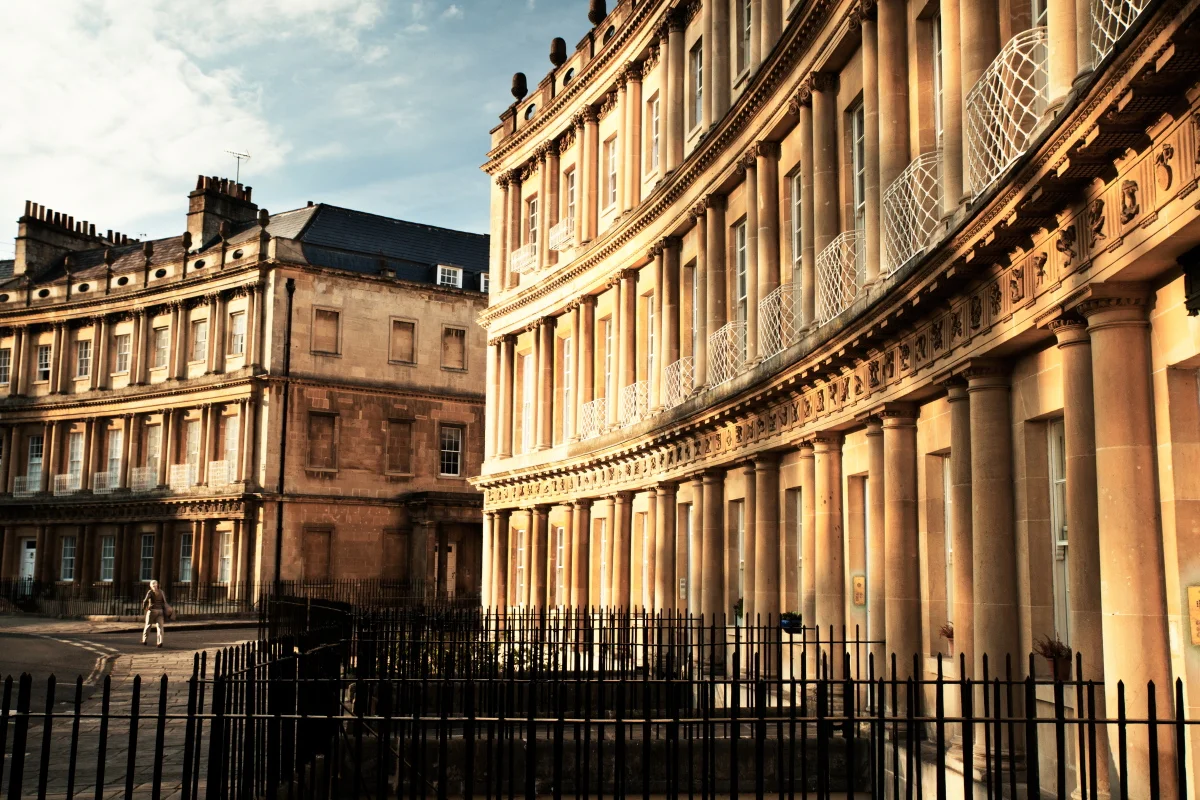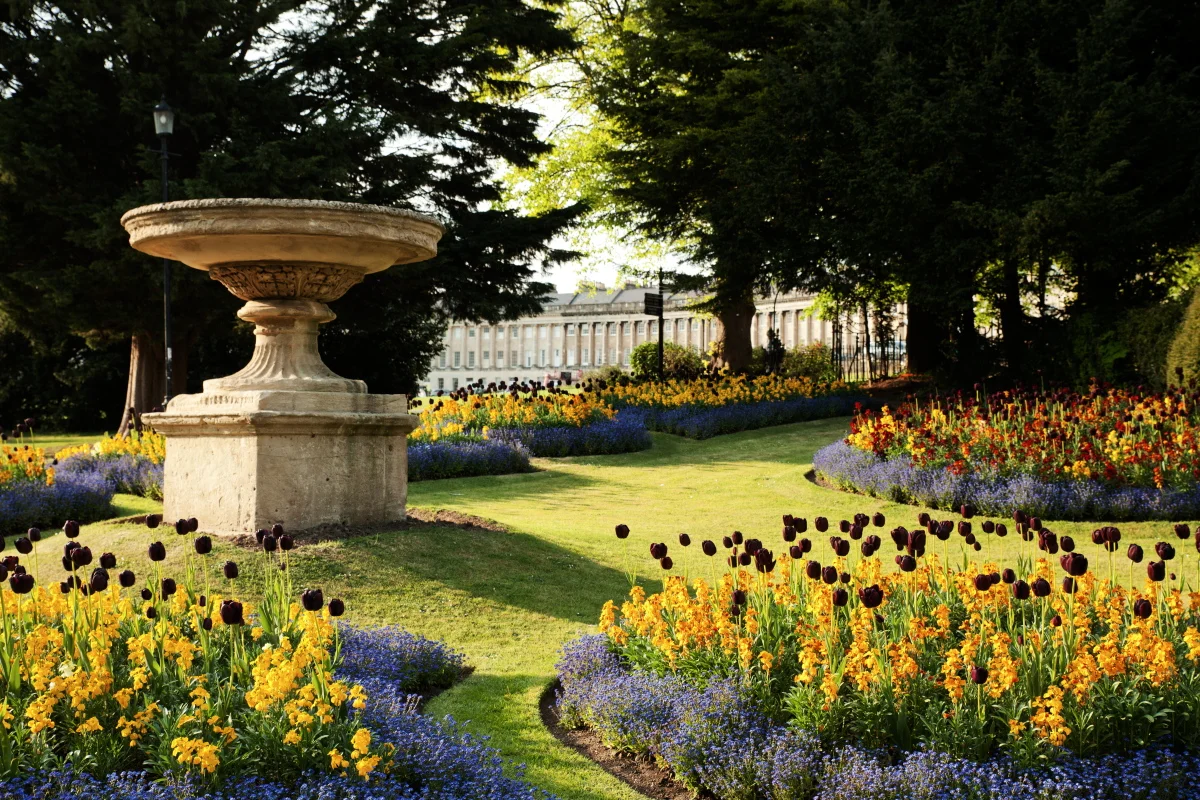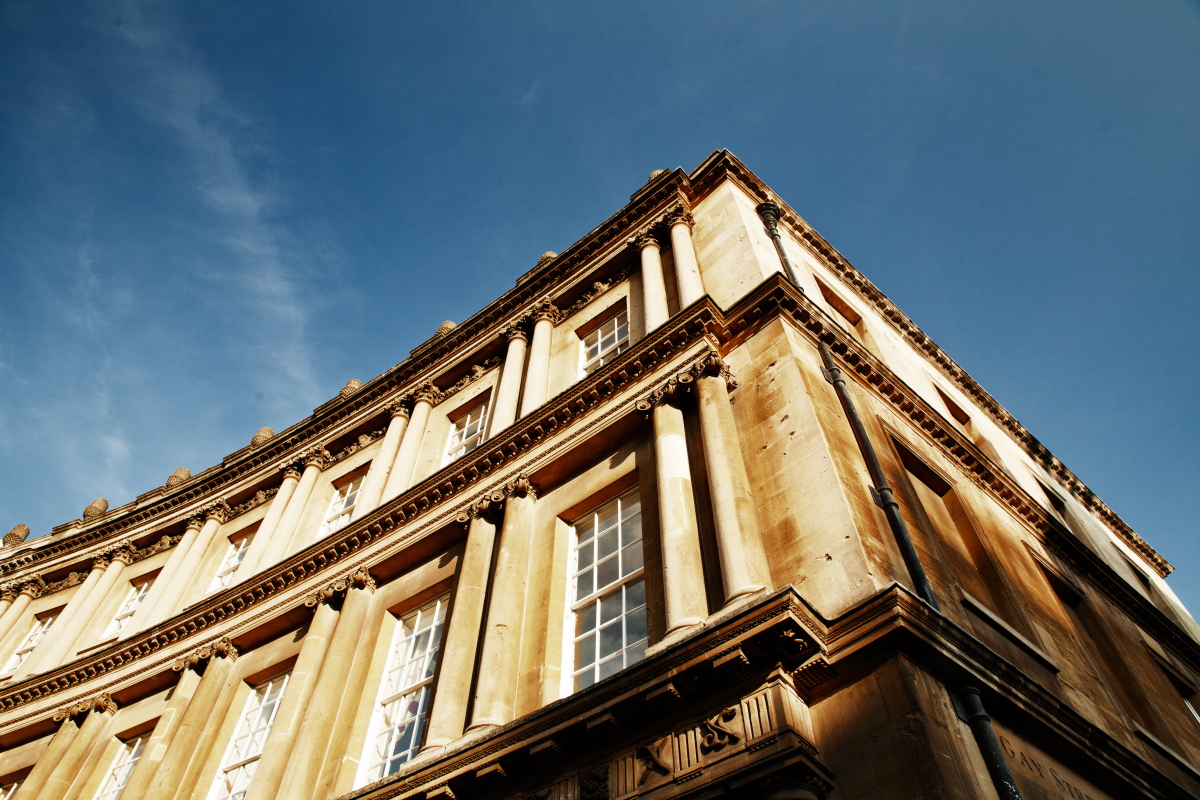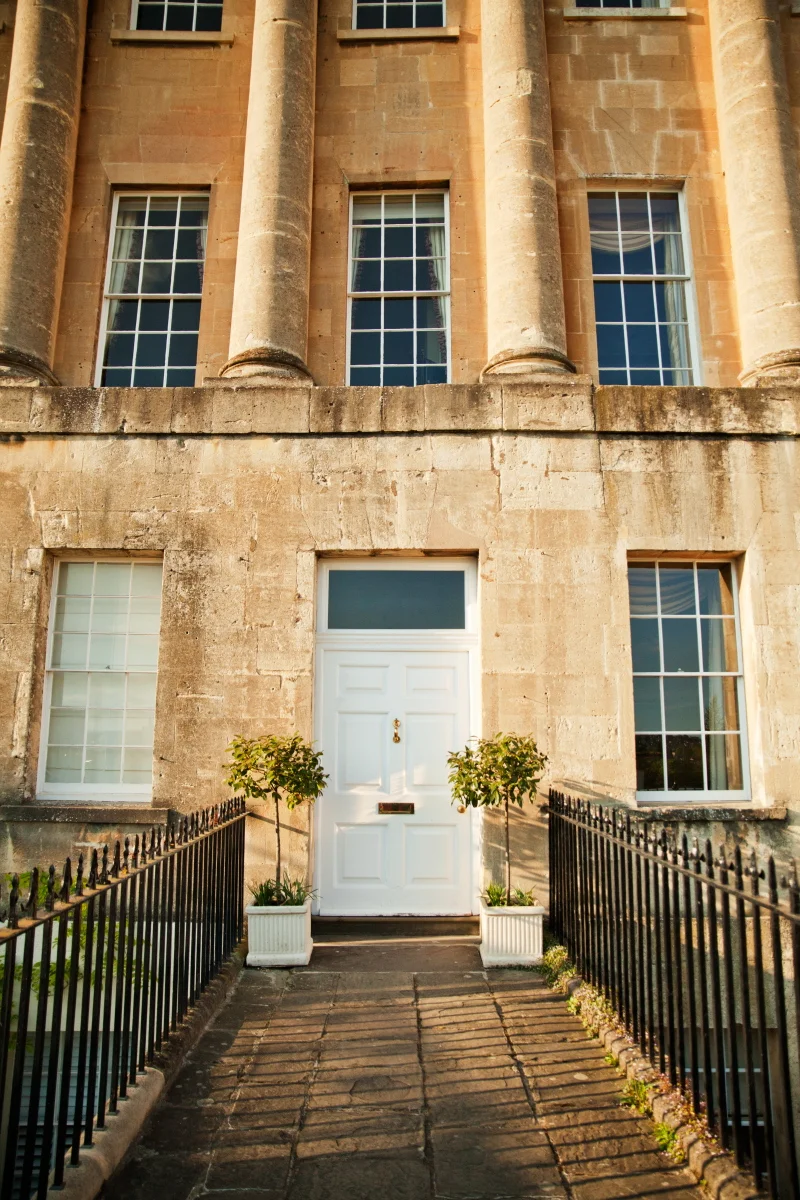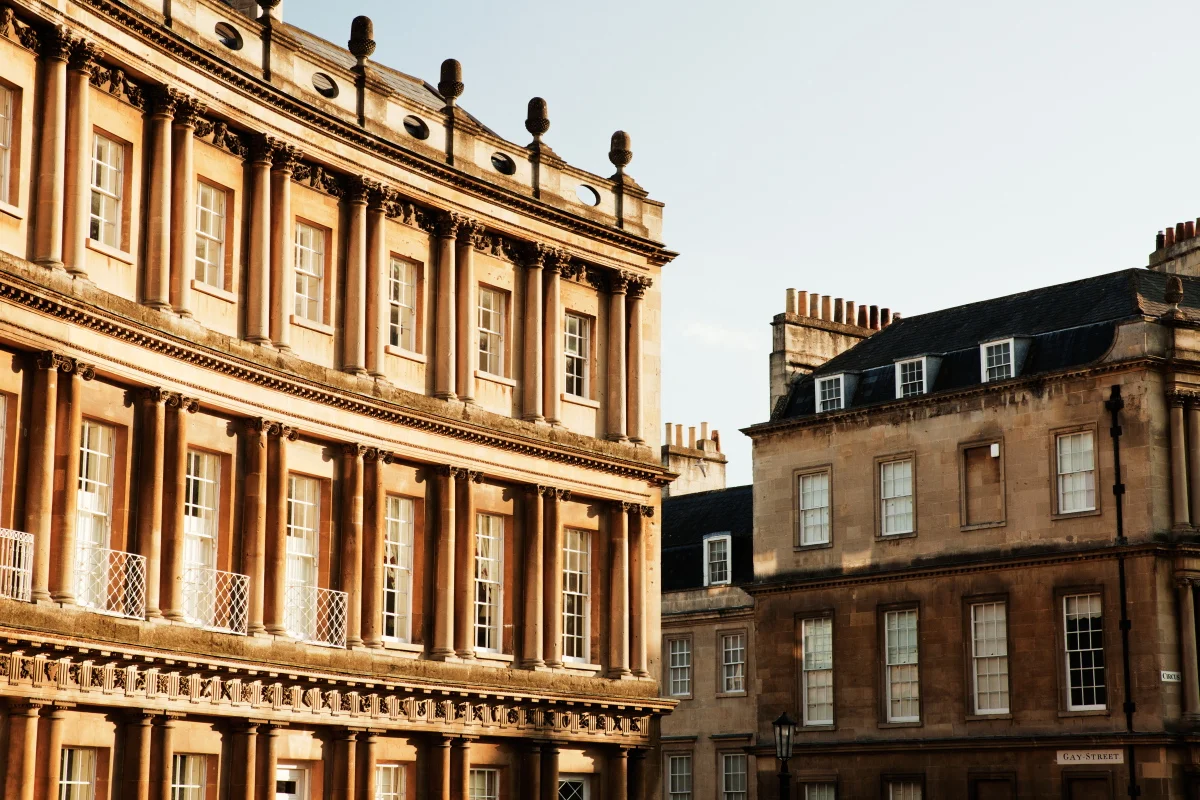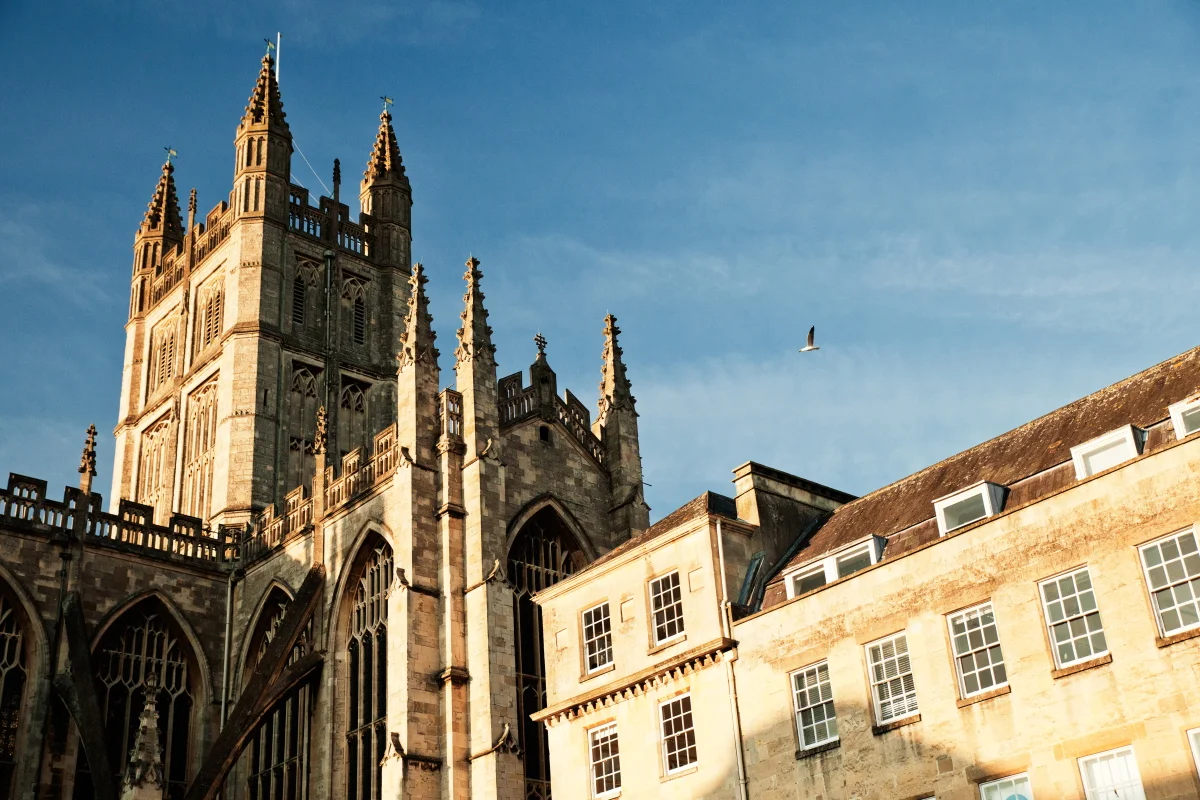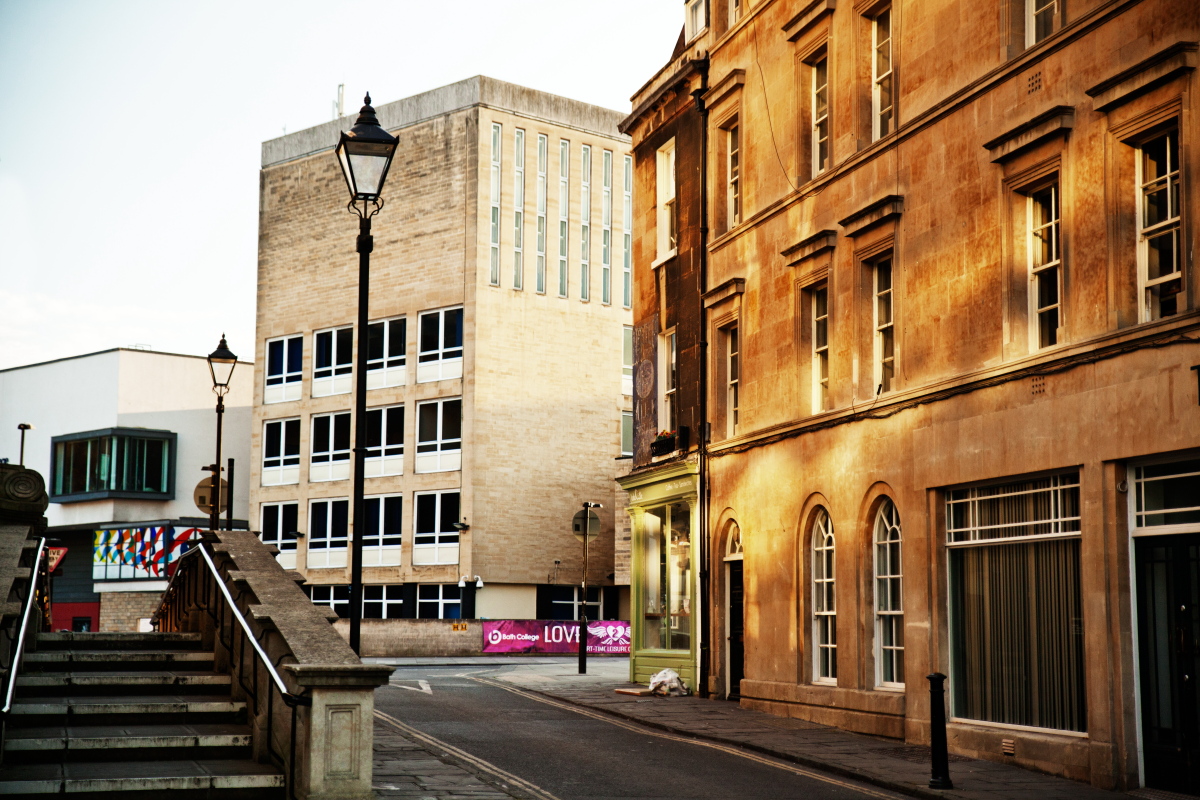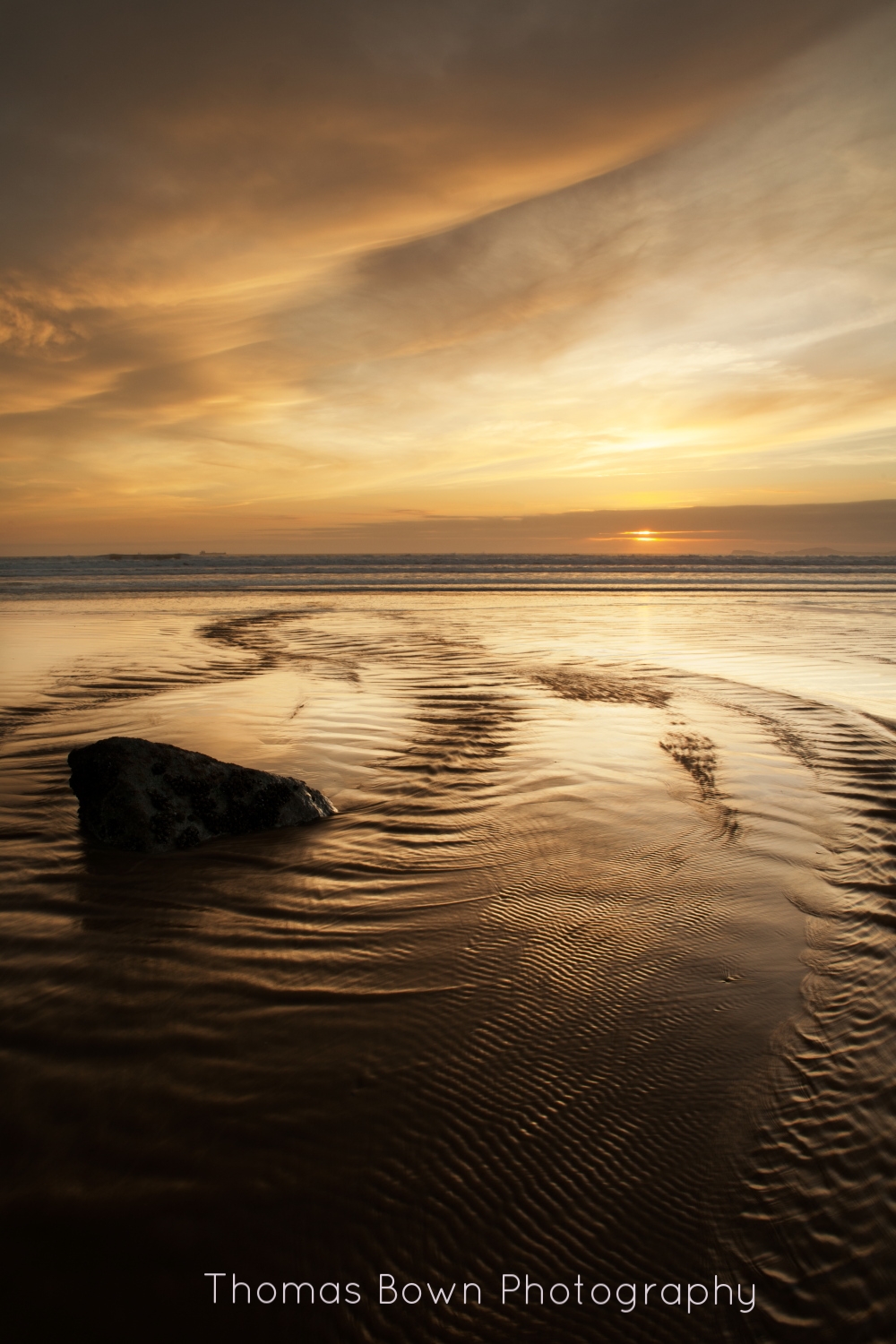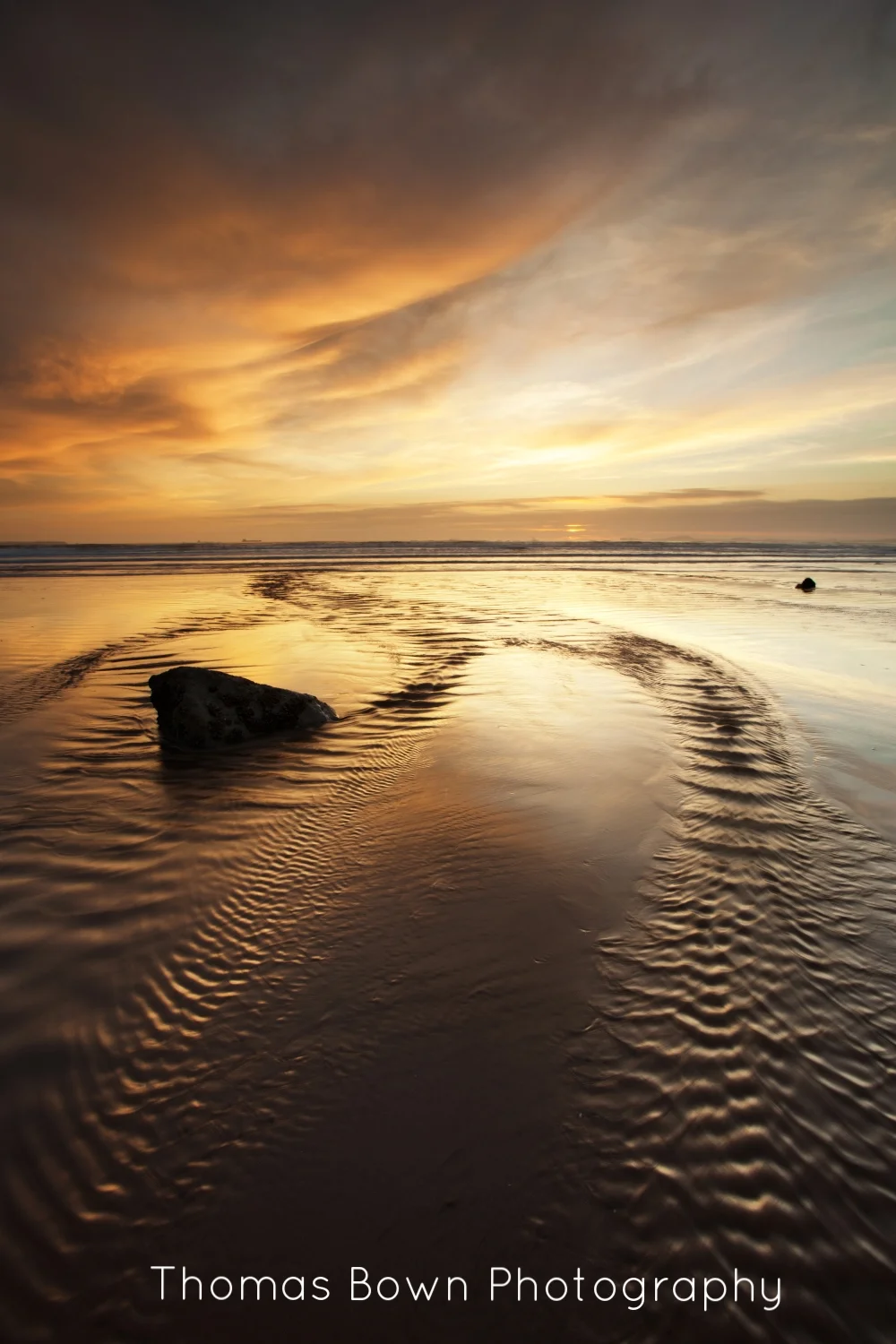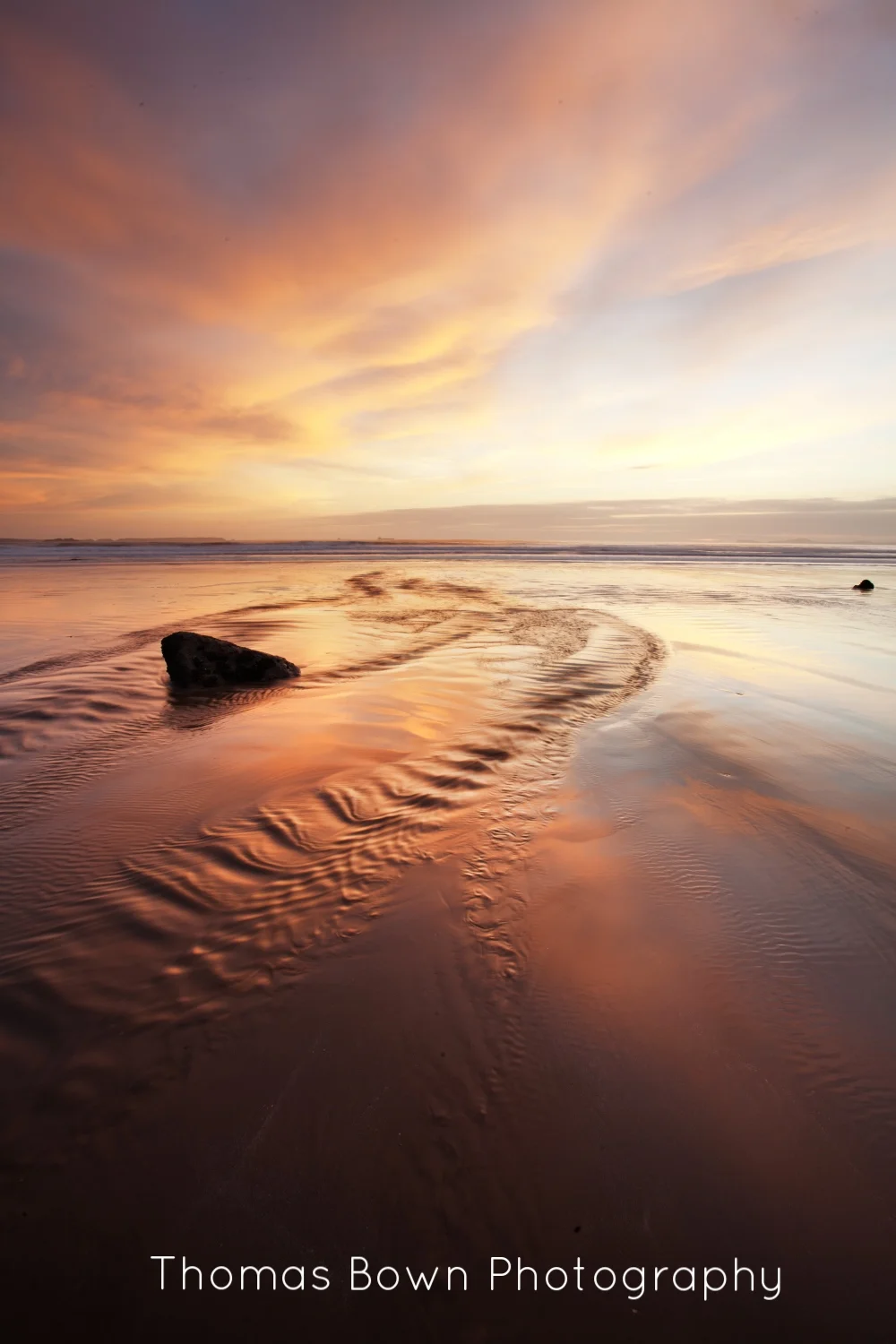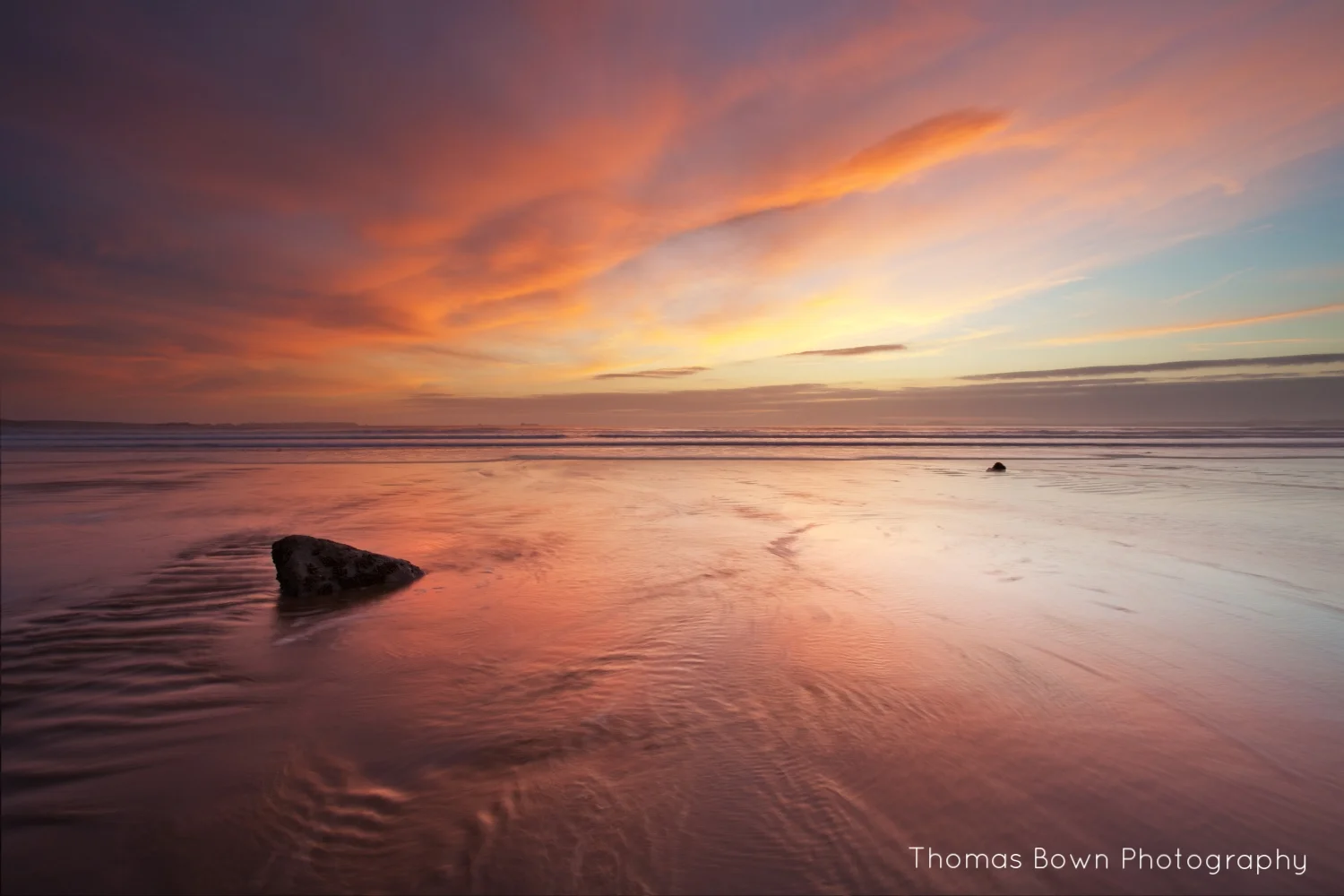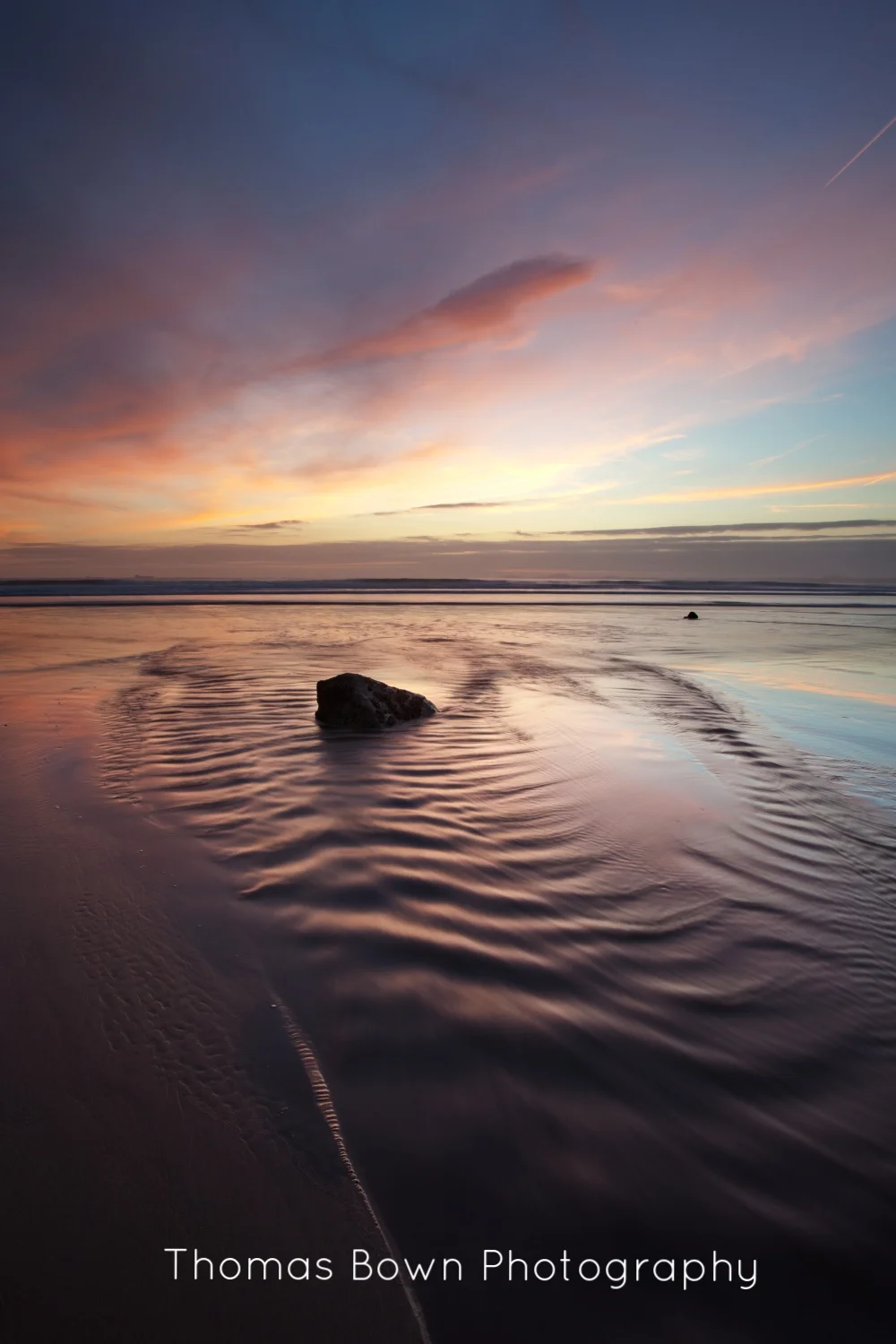We've been very lucky this Spring. At the moment I'm writing whilst rain falls outside but we've had some beautiful days recently. I've taken the opportunity when possible to get down to the sea and enjoy the sun and the water.
Sometimes it's nice just to go out, stand around in ankle deep water and take some really simple shots of the water doing it's thing. I've enjoyed a few hours spent this way in the last few weeks. To get this smooth effect with the water requires a bit of technique. Some of these were taken in bright sunshine where usually the shutter speed would be very fast. A neutral density filter helps cut the amount of light getting into the camera allowing longer shutter speeds without overexposing the shot. Slowing down the shutter speed smooths out the textures as the water washes in and out but leaves patterns behind. Each exposure is about 6 seconds long (longer on some of the shots taken later in the day) and each exposure can create it's own interesting effect. When I go out to take this type of shot, I often spend many minutes taking essentially the same shot but enjoying all the different effects each new wave can bring. As usual, I come back with a whole load of shots from this type of day so this little selection are the best from maybe 50 shots.
The first shot is taken from the beach at Newgale. If you look closely you can see a tanker on the horizon. St Brides Bay often becomes home to a few ships moored up waiting for their slot in the harbour at Milford Haven and they can be there for a few days or sometimes much more. I'm more of a landlubber myself so find it strange the life of the folk on those big boats. I find it odd to think of being out in all that space surrounded by water for weeks at a time but the captain of a tall ship once told me that was the appeal for him. I guess we all go and find that space somewhere although I suppose the motivation is more monetary for the folk aboard that tanker.
These were taken at Newgale, Marloes and Penycwm.








